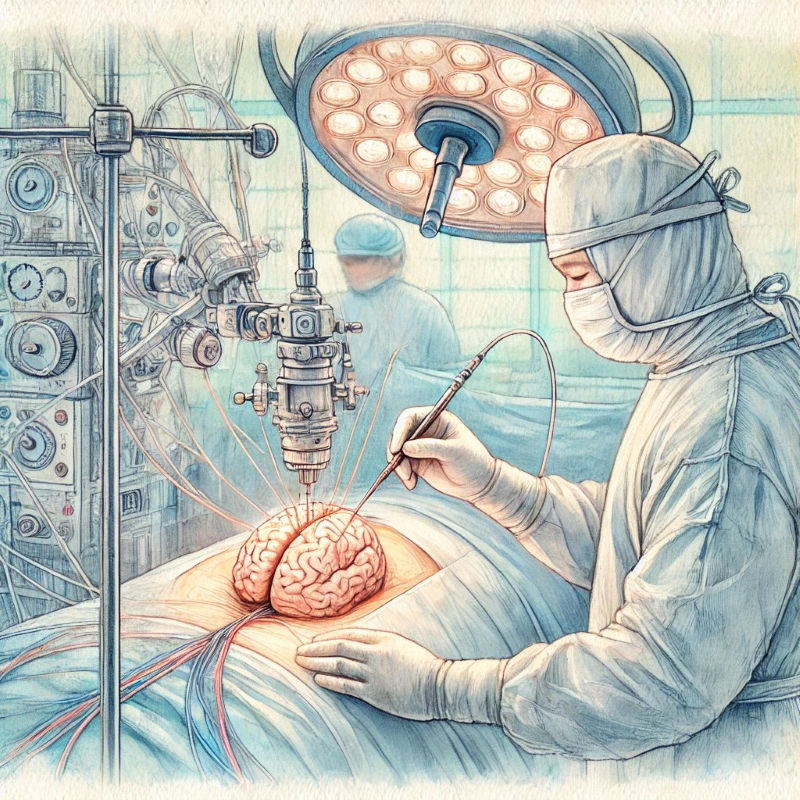Deep Brain Stimulation and AI: A Crucial Discussion

In recent years, Deep Brain Stimulation (DBS) has become a prominent treatment option for individuals with Parkinson’s disease. This neurosurgical procedure, which involves implanting electrodes into specific areas of the brain, offers significant relief from symptoms such as tremors, rigidity, and bradykinesia. However, as with any medical procedure, DBS surgery raises numerous questions and concerns, both before and after the operation. Addressing these questions with the most up-to-date scientific and clinical information is crucial for patient care.
The Role of AI in Medical Guidance
The emergence of artificial intelligence (AI) as a tool in healthcare has sparked both excitement and concern. One notable example is ChatGPT, an AI language model developed by OpenAI, designed to comprehend and respond to a wide array of medical questions. ChatGPT has demonstrated its ability to generate human-like responses, making medical information more accessible to patients. However, despite its potential, the use of AI in such a sensitive area as healthcare, particularly for guiding decisions related to complex surgeries like DBS, comes with inherent risks.
Evaluating AI’s Performance in DBS Surgery Guidance
A recent study sought to evaluate the performance of ChatGPT models 3.5 and 4 in answering questions related to DBS surgery for Parkinson’s disease. The study involved 40 open-ended questions in both English and Portuguese, reflecting the most common concerns patients have before and after DBS surgery. Two experienced specialists in functional neurosurgery and neurological movement disorders graded the responses, with a third expert resolving any discrepancies.
The results were telling. ChatGPT 3.5 achieved a correct response rate of 57.5%, while ChatGPT 4 performed significantly better, with a correct response rate of 83.8%. Notably, GPT 3.5 produced potentially harmful answers in 6.3% of cases, whereas GPT 4 did not produce any responses deemed harmful. This difference highlights the advancements made in AI technology but also underscores the necessity of exercising caution when relying on these tools for medical advice.
Understanding the Risks and Limitations
While the performance of ChatGPT 4 demonstrates promise, the study raises critical concerns about the risks associated with using AI for patient education and guidance, especially in the context of DBS surgery. The fact that ChatGPT 3.5 provided harmful responses in some instances is a stark reminder that AI models, despite their sophistication, are not infallible. The potential for misunderstanding or miscommunication could lead to serious complications, particularly in a field as specialized as neurosurgery.
DBS is a complex procedure that requires careful consideration of various factors, including the precise placement of electrodes, the patient’s medical history, and the management of potential side effects. Given these complexities, it is essential for patients to receive guidance from qualified healthcare providers who can offer personalized advice based on a thorough understanding of their unique situation.
The Future of AI in Healthcare
As AI continues to evolve, its role in healthcare will likely expand. Tools like ChatGPT have the potential to complement traditional patient care by providing easily accessible information and support. However, the current limitations and risks must not be overlooked. Until these concerns are fully addressed, AI should be used with caution, particularly in high-stakes scenarios like DBS surgery.
For patients and caregivers, it is crucial to approach AI-generated information as a supplementary resource rather than a primary source of medical advice. Always consult with your healthcare provider before making decisions about your treatment plan.
SEO Keywords:
Deep Brain Stimulation, Parkinson’s disease treatment, AI in healthcare, ChatGPT medical guidance, DBS surgery risks
AI-generated medical content is not a substitute for professional medical advice or diagnosis; I hope you found this blog post informative and interesting. www.parkiesunite.com by Parkie
DALL-E Prompt:
“A watercolor illustration depicting a delicate and intricate scene inside an operating room, focusing on a neurosurgeon performing Deep Brain Stimulation surgery on a patient. The scene should capture the precision and care of the procedure, with the medical staff working attentively. Soft pastel colors should dominate the palette, with the machinery and equipment subtly depicted to emphasize the human element. The background should be lightly blurred, drawing attention to the surgeon’s hands and the patient, illustrating the intricate nature of the surgery.”
DALL-E Prompt Text:
“A watercolor illustration depicting a delicate and intricate scene inside an operating room, focusing on a neurosurgeon performing Deep Brain Stimulation surgery on a patient. The scene should capture the precision and care of the procedure, with the medical staff working attentively. Soft pastel colors should dominate the palette, with the machinery and equipment subtly depicted to emphasize the human element. The background should be lightly blurred, drawing attention to the surgeon’s hands and the patient, illustrating the intricate nature of the surgery.”